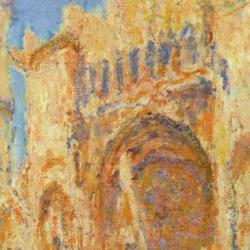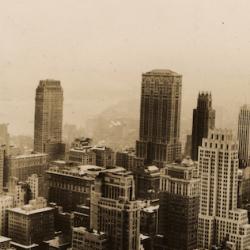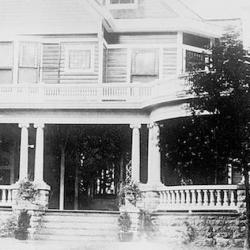Some of the churches that Duncan Stroik discusses in The Church Building as Sacred Place sound and look like wretched spaces. The parish church in Tor Tre Teste, thirty miles outside central Rome, for instance, is designed to disorient and decenter:
“The nave is conceived as an asymmetrical space in which every element that might bring harmony is bisected or cut into by some other object. The vertical south wall of paneled wood contrasts with the curving concrete north wall that hangs precipitously over the assembly. The curving wall on the north has a large L-shaped cutout in the direction of the baptistery and daily chapel, which takes away from the directionality toward the altar. The glass ceiling is sloped in one direction.” It communicates “tension and distraction” and “the worshiper is left with fragments and disharmony” (78).
He’s death on the fan-design for church seating, and his historical arguments are pretty compelling. During the nineteenth century, Protestant churches moved to fan seating in order to focus attention on the pulpit, which became the center of a theatrical display: “Direct quotations from secular theater architecture abounded, including marquis lighting, proscenium arches, and semiprivate opera boxed rented by wealthy members or used by expectant mothers. Projection booths for lantern slides and upholstered operate seats were also employed.” Designed as a theater, the space “encouraged audiences to remain quiet and passive as they focused their attention on the stage, especially when it came to organ, choir, and orchestra performances” (95).
Stroik offers a brilliant analysis of the secularization of public space in the best chapter, “Can We Afford Not to Build Beautiful Churches?” In contrast to most cities, ancient and early modern, Washington D.C. was designed with a religiously empty center: “The town square is naked. Built so large that it can symbolically house the whole nation, the Mall is all government without religion. In fact, Washington, D.C. may be the first great city in the world that has no house of worship at its center. Instead, the legislative house wears the trappings of a cathedral with a magnificent dome that can be seen for miles, while a pantheon, Greek temple, and an obelisk honor the saints of our civic religion. Everywhere the architectural semantics of kingship and religion are used to express the rule of democracy and a secular faith” (107-8). D.C. expresses the wall of separation better, more fixedly and permanently, than any SCOTUS opinion could.
Insightful as the book is, I’m skeptical of Stroik’s central claim, namely, that the church should be understood sacred place. He often draws parallels with the biblical sanctuaries, but I wonder if Stroik has reckoned sufficiently with the dramatic shifts from old to new. He is certainly aware of the shift from temple as exclusively a domus Dei to the church as a domus Dei et ecclesiae: “The ancients required large forecourts for the people to gather, whereas the Christians required large interiors so that liturgy could be celebrated regardless of weather, season, or time of day. Perhaps more importantly, the holy temple could now be entered by the laity. The building was not merely a monumental backdrop for the altar of sacrifice, but a place of sacrifice and prayerful meditation. In this sense the pre-Christian templum Dei became also a domus ecclesiae, both a house of God and a house of the people of God” (106). The end of the old covenant doesn’t simply mean that there are many temples where once there was only one; it means that “temple” has a different connotation: God welcomes His people into the interior of his house.
This is exactly right, but that dramatic, epochal change should affect the interior configuration of the house of God. Stroik argues, rightly, that the church building is a sacramental space that should draw attention to the table (altar), but if the house is the house of the people, doesn’t that imply something about how they should be arranged with respect to the table? Bucking post-Vatican II trends, Stroik is all for raised altars, altar rails, and altars placed in the apse. He thinks that the sanctuary should be off-limits to any but priests, and is disgusted that churches have to put signs up to keep people from treading on holy space.
Obviously, these objections represent a different sacramental theology than Stroik’s; my objections to Catholic church architecture are objections to traditional Catholic construals of the Mass. But it’s not merely a Catholic-Protestant difference. Stroik offers little defense of his assumptions about sacred space, other than citing Catholic tradition, a few Old Testament texts, and transcultural notion of “the sacred.” Stroik, I think, would do well to be more open to some the suggestions of the revisionist architects that he heartily despises.











